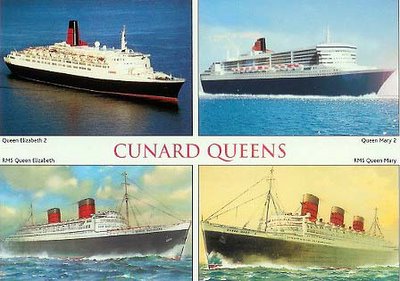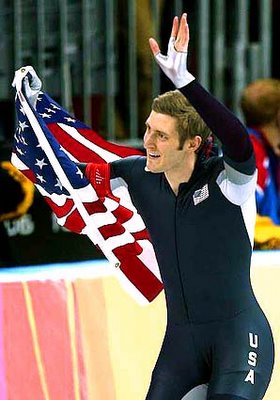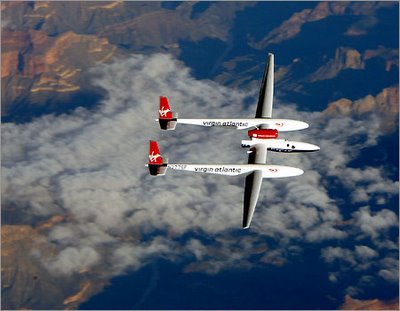 Thousands of people came out to view the massive 2-year-old Queen Mary 2, or QM2, after it arrived in Los Angeles on Wednesday for its first West Coast stop. Several hundred people were waiting in the dark along the Main Channel when the ship arrived at 4:45 a.m., said Los Angeles port spokeswoman Theresa Adams-Lopez. By 4:30 p.m., she said, 12,000 cars had been counted carrying onlookers hoping to catch a glimpse of the massive vessel.
Thousands of people came out to view the massive 2-year-old Queen Mary 2, or QM2, after it arrived in Los Angeles on Wednesday for its first West Coast stop. Several hundred people were waiting in the dark along the Main Channel when the ship arrived at 4:45 a.m., said Los Angeles port spokeswoman Theresa Adams-Lopez. By 4:30 p.m., she said, 12,000 cars had been counted carrying onlookers hoping to catch a glimpse of the massive vessel.The ship is so big that it had to back into its terminal because it could not fit under the Vincent Thomas Bridge. It spent the day docked double-wide, in Berths 91 and 92, and attracting so much attention that it caused traffic jams both on and around the bridge all day.
But it is today's meeting of the two Queen Marys that ocean liner aficionados have been waiting for.The old ship was among the grandest of its time; the new ship, loaded with every lavish modern amenity, is the world's largest and most expensive ocean liner.
The meeting brings into sharp relief the contrast between two eras: the heady years of the last century when opulent ocean liners ruled the Atlantic, and the efficient and plugged-in early 21st century, when hardly any American takes a ship to Europe, but quick cruises to the Caribbean or Mexico are popular.Most of those aboard the QM2 can relax outdoors in private, on the balconies connected to 80% of the staterooms and cabins. The balconies give the boat, viewed from the side, a little of the look of a massive waterfront hotel or condominium complex.
On the first Queen, passengers could send radiograms ashore in emergencies but remained for days on end largely isolated from the rest of the world. The ship published a daily newspaper to keep passengers vaguely abreast of world affairs. But the new ship offers constant updates from such cable news stations as CNN, viewable on the televisions in every cabin.
Those on the QM2 receive temporary ship e-mail addresses and can surf the Internet in their cabins, at 13 WiFi hotspots scattered around the boat and in an Internet cafe called ConneXions. Anyone can reach them any time, even their faraway bosses at work onshore. Passengers on the old Queen Mary kept in shape with frequent "constitutionals" on the wide teak decks, where they could inspect and greet fellow passengers and breathe in the sea air. The bathtubs on the old boat came with four spigots: fresh and salt water, hot and cold.
QM2 passengers enjoy ultramodern gyms and a Canyon Ranch spa, as well as countless opportunities to relax in style in such venues as a wine bar, a champagne bar and a casino. They can even go shopping in an onboard Hermes boutique.
But even with its 21st century trappings, the QM2 takes pride in its old-world stylishness. On Wednesday, a string quartet played Handel's "Water Music" as passengers came aboard. The inside also retains some of the aura of an old-time liner, with thick red carpeting, chandeliers, sweeping staircases and Art Deco metalwork.
And for all its high-tech extras, the new ship cruises at 28.5 knots, exactly the same speed of the old ship in the days when it used to steam across the Atlantic.
Meeting of the queens
Queen Mary 2 was docked at the Port of Los Angeles this week, directly west of the vintage Queen Mary in Long Beach. It was the first time the two elegant ocean liners were in the same area. Here's a look at the two ships:
Queen Mary
1,019 feet
Capacity: 2,139 passengers
Number of decks: 12
Gross tonnage: 81,237 tons
Propulsion: Steam turbines
Horsepower: 160,000
Cruising speed: 28.5 knots (34 mph)
Maiden voyage: May 27-June 1, 1936, from Southampton, England, to New York
Final cruise: Oct. 31-Dec. 9, 1967, from Southampton to Long Beach
Sample voyage: Minimum round-trip ocean fare per person for New York/England Atlantic crossing, summer 1936: first-class cabin $536, second class $276, third class $167.50
Typical stateroom: First class, two twin beds, sitting area, private bath, portholes; third class, bunkbeds, sink, bath down the hall
Menu selection: July 12, 1936: duckling, guinea chicken, quail, jumbo squab, cauliflower hollandaise, Prince of Wales pudding, chocolate eclairs, French pastry, fried Camembert
Queen Mary 2
1,132 feet
Capacity: 2,620 passengers
Number of decks: 17
Gross tonnage: 151,400 tons
Propulsion: Diesel-electric / gas turbines
Horsepower: 157,000
Cruising speed: 28.5 knots (34 mph)
Maiden voyage: Jan. 12, 2004, from Southampton, England, to Ft. Lauderdale, Fla.
Sample voyage: 36-day South American voyage from Los Angeles, per person double occupancy fares from $7,749 to $79,349
Typical stateroom: Interactive televisions, walk-in closets, direct-dial phones, individual thermostats, full baths with tubs and/or showers
Menu selection: Feb. 22, 2006, Britannia English restaurant: prosciutto with arugula coulis, shrimp thermador, oxtail consomme, lobster risotto, Oriental glazed Alaskan salmon, gingered greens and citrus soy emulsion, slow-roasted pork, caramelized creme brulee, cappuccino souffle














